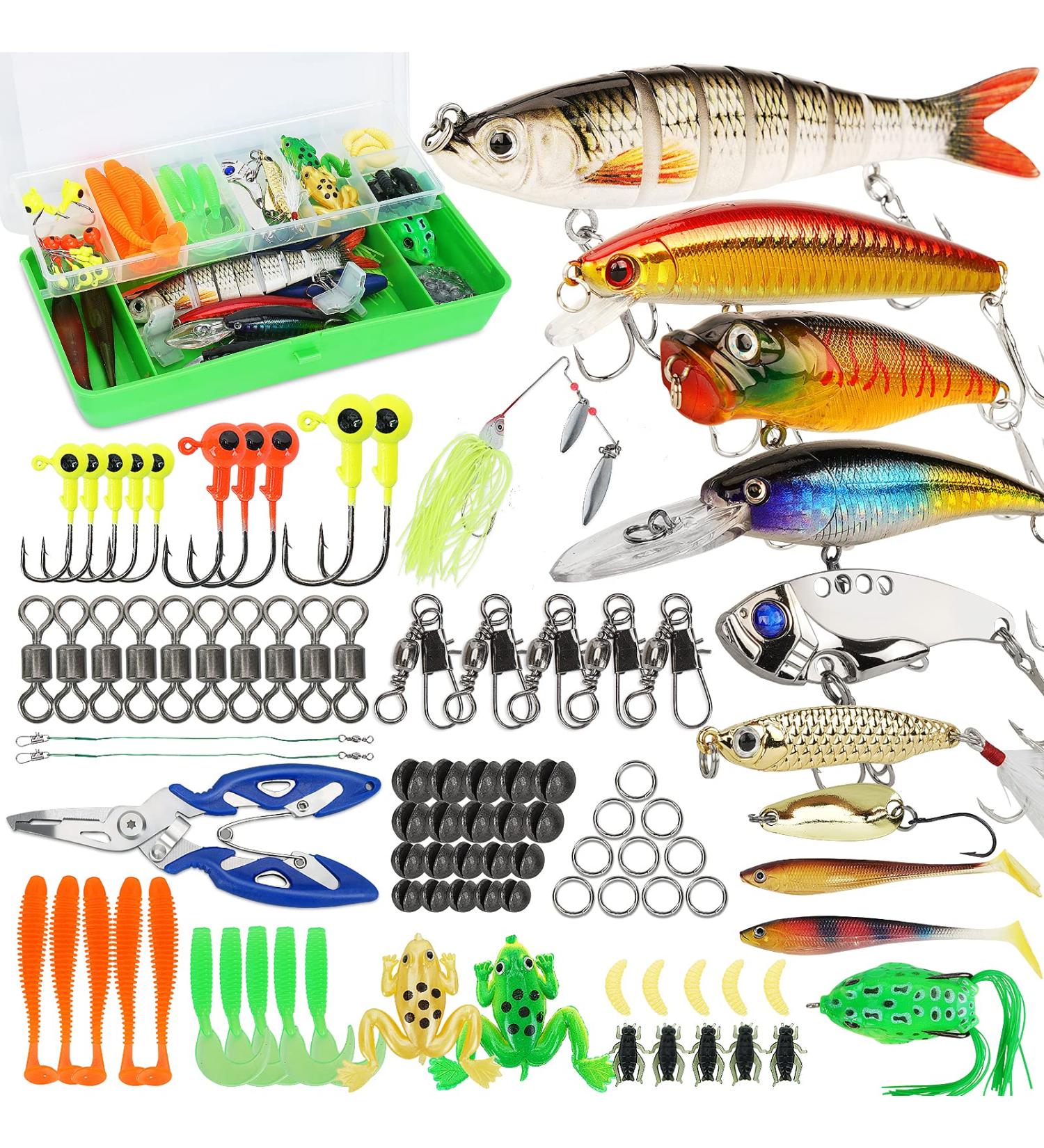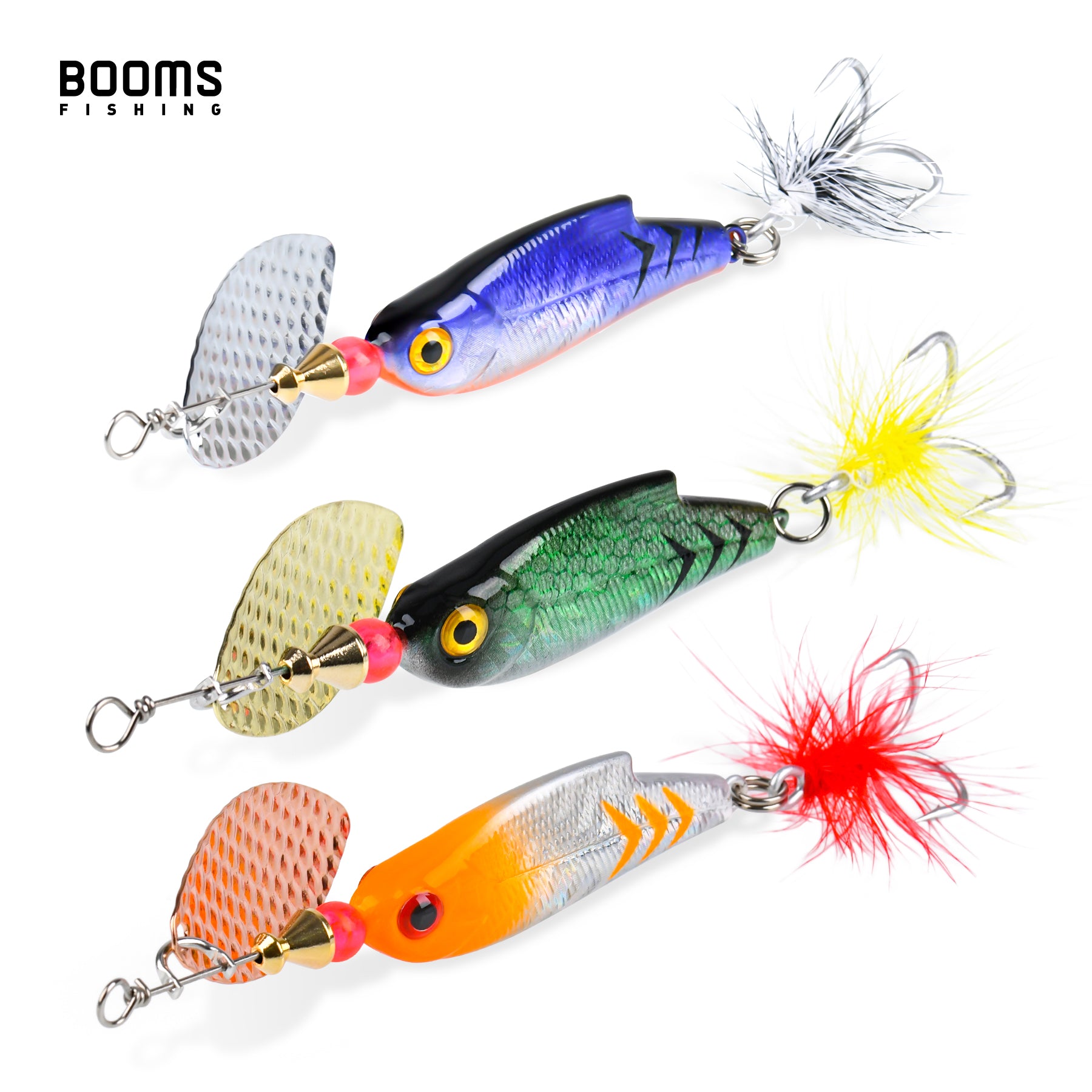12 Best Bass Lures for Pros Recommended by Tournament Anglers
Explore the Tricks Behind Effective Bass Lures to Boost Your Fishing Experience
Comprehending the intricacies of bass Lures can substantially influence fishing success. Different Lures serve unique objectives, from crankbaits made for broad protection to jigs that target certain structures. The performance of these Lures typically hinges on elements such as color, movement, and seasonal patterns. By mastering these aspects, fishermens can unlock a more gratifying experience. Yet, the inquiry stays: which techniques will yield the most effective outcomes on the water?
Comprehending Bass Behavior and Habitat
Comprehending the behavior and habitat of bass is important for fishermens looking for success on the water. Bass are functional fish located in different freshwater environments, consisting of lakes, ponds, and rivers. They tend to like locations with structure, such as submerged rocks, dropped trees, and marine greenery, which supply sanctuary and hunting grounds.
Seasonal patterns considerably affect their actions; in warmer months, bass frequently inhabit superficial waters, while they pull back to deeper locations during cooler periods. Bass Fishing Lures. Their feeding routines are opportunistic, with a diet plan consisting primarily of smaller fish, insects, and shellfishes
Time of day additionally contributes; bass are more energetic during late evenings and very early mornings. Weather condition problems can affect their habits too, as cloudy days might urge superficial feeding, whereas brilliant sunlight typically drives them to seek cover. Recognizing these patterns equips fishermens with the understanding needed for effective angling methods.
Kinds Of Bass Lures and Their Makes use of
A range of bass Lures are necessary devices for anglers intending to attract this prominent game fish. These Lures can be categorized into several types, each offering distinctive functions. Crankbaits, developed to resemble the swimming action of baitfish, are reliable for covering huge areas quickly. Spinnerbaits, featuring rotating blades, produce vibrations and flashes that can lure bass hiding in cover. Jigs, with their heavy heads and weedless style, are perfect for bottom fishing, allowing fishermens to present lure near structures where bass frequently hide. Soft plastics, such as worms and animal baits, offer adaptability and can be set up in several methods to adapt to varying problems. Topwater lures, like poppers and frogs, are best employed during low-light hours when bass are actively feeding upon the surface area. Each kind of appeal plays a critical function in enhancing fishing experiences and boosting the chance of successful catches.

Design and color: What Brings In Bass?
What variables affect bass destination to particular lure design and colors? The interaction of light, water clarity, and the native environment plays a crucial duty. Brilliant shades, such as chartreuse and orange, can catch a bass's eye in dirty waters, while a lot more suppressed tones like eco-friendlies and blues might excel in clear problems.
Style components, including form and activity, likewise substantially impact bass destination. Lures that simulate all-natural victim, such as baitfish or crawfish, are particularly reliable. Furthermore, the visibility of realistic details, like scales or fins, enhances the natural look, more tempting bass.
Emotional aspects, such as a bass's feeding practices and territorial instincts, need to not be overlooked. In particular situations, vibrant designs can provoke a response from aggressive bass, while refined variations can attract extra mindful fish. Inevitably, comprehending shade and layout nuances is crucial for optimizing attraction performance.
Matching Lures to Water Issues
Choosing the best lure includes greater than just color and style; water conditions play a substantial duty in figuring out the most reliable choices. Elements such as water quality, deepness, and temperature level straight affect bass actions and their feeding patterns. In clear water, subtle discussions and all-natural shades have a tendency to be a lot more reliable, while murky conditions might ask for brighter, much more lively Lures that can stand out.
Temperature level likewise influences bass activity; during warmer months, faster-moving Lures can elicit strikes, whereas cooler temperature levels might require slower, much more intentional discussions. Furthermore, deeper waters frequently necessitate larger Lures that can get to the preferred depth, while shallow locations are much better matched for lighter, surface-oriented options.
Strategies for Efficient Lure Discussion
Mastering the methods for effective attraction presentation can substantially improve fishing success. Fishermens should concentrate on the speed and rhythm of their retrieves, adjusting them to simulate the all-natural motion of prey. A steady retrieve works well for many attractions, but including pauses can cause strikes from more cautious fish. In addition, varying the deepness of the attraction is crucial; making use of various casting angles and readjusting the reel can help target fish at various midsts.
Utilizing a mix of finesse discussions, such as twitching or dragging the lure across all-time low, can likewise be efficient. It is important for anglers to review the water and change their methods based upon visibility and framework. Providing Lures near cover, like immersed rocks or vegetation, usually produces better results, as bass often tend to look for sanctuary. Inevitably, try out various strategies will cause a more gratifying angling experience.
Seasonal Factors To Consider for Lure Selection
Seasonal adjustments dramatically influence bass habits and attraction efficiency. As water temperature levels rise and fall, anglers need to readjust their lure selections to align with pre-spawning and post-spawn conditions. Understanding these seasonal patterns can improve fishing success by targeting bass at their most here are the findings active times.
Seasonal Water Temperature Level Effects
As water temperatures vary throughout the year, bass habits and feeding patterns alter, affecting the efficiency of numerous lures. Throughout colder months, bass have a tendency to come to be inactive, favoring slow-moving Lures that resemble having a hard time target. In contrast, as temperature levels increase in springtime, bass become extra energetic, making much faster, a lot more hostile Lures effective. Mid-summer sees bass looking for deeper, cooler waters, demanding making use of Lures that can reach these depths. As temperatures begin to decrease in autumn, bass usually feed heavily to prepare for winter months, making functional Lures that can copy a variety of forage kinds especially successful. Understanding these seasonal temperature level results permits anglers to select ideal Lures that line up with bass habits, maximizing their angling success.
Pre-Spawning Tempt Choices
What factors affect the option of Lures during the pre-spawning duration for bass? Anglers have to consider water temperature, weather, and the bass's feeding behavior. As temperature levels rise and days extend, bass become more aggressive and active, motivating a shift in their feeding patterns. Throughout this time, lures that mimic the natural target of bass-- such as shad or bluegill-- are particularly efficient. Popular options consist of spinnerbaits, lipless crankbaits, and jigs, which can be fished at different depths. In addition, anglers must focus on areas with cover, such as immersed plant life or rocky frameworks, as these spots usually bring in pre-spawn bass. Bass Lures. Understanding these elements can considerably enhance the chances of an effective fishing journey during this critical seasonal phase
Post-Spawn Techniques Adjustments
Post-spawn bass exhibit different actions than during the pre-spawn stage, efficient appeal option continues to be essential for fishermens aiming to target them effectively. After generating, bass typically become lethargic and look for deeper waters, making it important to adjust lure options as necessary. Anglers ought to think about using slower-moving lures, such as jigs or soft plastics, which can entice bass that are less aggressive. Crankbaits with a subtle action can additionally be efficient, enabling a slower presentation that imitates the all-natural post-spawn forage. In addition, fishing near structure, such as immersed plant life or rocks, can increase possibilities of success. By recognizing these seasonal adjustments, anglers can improve their angling experience and enhance their catch rates during the post-spawn duration.
Often Asked Inquiries
How Do I Pick the Right Rod for Bass Fishing?
To select the ideal rod for bass fishing, one need to consider the pole's size, action, and power. A tool to medium-heavy rod, around 6 to 7 feet, is typically ideal for convenience and control.

What Is the very best Time of Day to Capture Bass?
The ideal time of day to catch bass is typically early morning and late mid-day. Throughout these periods, bass are extra energetic, feeding near the surface, making them easier targets for fishermens making use of efficient appeals.
How Do Weather Condition Problems Impact Bass Fishing Success?
Weather condition conditions substantially affect bass angling success. Warmer temperature levels and overcast skies typically urge bass task, while cool fronts can cause sleepiness. Rainfall can also enhance feeding behavior, making it important for fishermens to adapt their strategies appropriately.
Can I Use Lures for Various Other Fish Types?
Yes, lures developed for bass can additionally be effective for various other fish species. Nevertheless, picking the suitable size, color, and activity according to the target types and their feeding routines remains vital for success.
What Are Usual Errors When Making Use Of Bass Lures?
Typical blunders when using bass Lures include choosing improper sizes or read this article shades, obtaining too swiftly, failing to adapt to weather conditions, and not taking into consideration water deepness. These errors can significantly lower the possibilities of an effective catch.
As water temperatures vary throughout the year, bass habits and feeding patterns transform, influencing the effectiveness of different lures. Mid-summer sees website here bass looking for much deeper, cooler waters, necessitating the usage of Lures that can reach these depths. Post-spawn bass display various behaviors than throughout the pre-spawn phase, effective attraction choice remains important for fishermens intending to target them efficiently. After spawning, bass commonly come to be lethargic and seek deeper waters, making it important to adjust attraction options as necessary. Common errors when making use of bass Lures include picking unsuitable sizes or colors, retrieving too rapidly, failing to adapt to weather conditions, and not thinking about water depth.